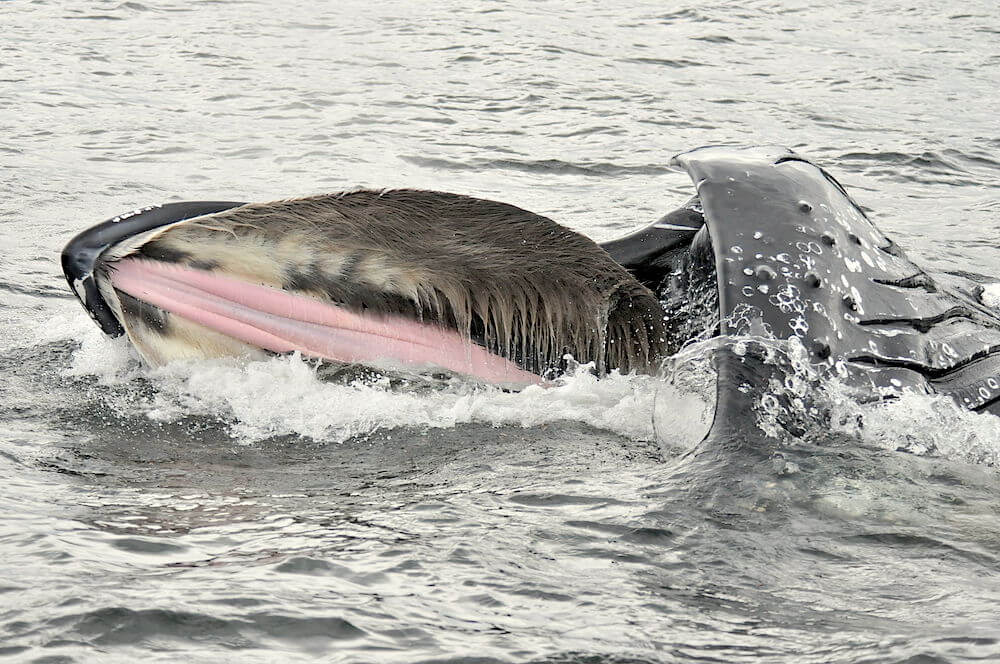It’s a well known fact: the St. Lawrence is a vast, open-air buffet for cetaceans. The abundance of prey is notable, whether it’s schools of fish such as capelin, herring, and sand lances, or clouds of zooplankton such as krill. In recent days, observers agree that the feast is in full swing in the waters that they have been navigating. Researchers from the Mingan Island Cetacean Study (MICS) published a photo of a humpback surface feeding in the Côte-Nord region, “a rare sighting in the Gulf of St. Lawrence”, they explained. Then, another photo with the comment “two humpbacks doze off after stuffing themselves on capelin”!
In the Gaspé region, whale cruise employees can always count on the presence of a dozen or so fin and humpback whales, in addition to minke whales and harbour porpoises, all within ten minutes of shore by boat. Captains even detected schools of fish on their echo sounder in the area where two humpbacks were probably gorging themselves 50 to 100 metres below the surface.

Our observer from Franquelin has been observing on a daily basis minke whales and gray seals, which are also avid fish eaters. On July 11, one of the three minke whales in the sector was having a field day near the shore, performing surface feeding breaches to capture its prey.
In the Saguenay-St. Lawrence Marine Park, observations of feeding minke whales are coming in daily. The big news of the week: the arrival of humpback Aramis! Aramis is known as a female born in 2007; her mother is Tic Tac Toe. This other “star” was also first spotted this season on July 11 by MICS in the Mingan region. Without a doubt these whales are coming to take advantage of the rich waters of the St. Lawrence.
Leaving the Gulf of St. Lawrence, in the Strait of Belle Isle between the Basse-Côte-Nord region and Newfoundland, researchers recently reported “the presence of many fin and humpback whales.” Same story from a longtime observer in the Saint Pierre and Miquelon region. Perhaps they stopped there due to an abundance of food in these sectors?






